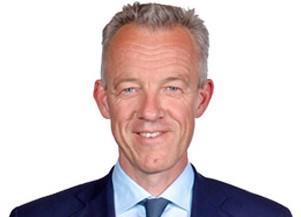EUROPE - Walt Disney, the telcoms giant Ericsson and fashion retailer Hennes & Mauritz were among nine of over 500 companies to receive highest marks by Norges Bank Investment Management (NBIM) for their engagement on child labour issues.
NBIM, which manages most of the NOK3.1trn (€393bn) Norwegian Pension Fund Global's assets, surveyed 527 companies worldwide on their management and reporting on the risks of child labour, awarding points on a scale up to ten. Of those surveyed, 44% scored zero, with the asset manager's global head of ownership policy Anne Kvam criticising the overall level of reporting as being insuficcient.
"Companies need to step up efforts if the international community is to meet targets for eliminating hazardous child labour by 2016," she said, adding however that the three years since the first report had seen an increase in businesses who addressed the issues.
Published ahead of the World Day Against Child Labour on Sunday, NBIM for the first time named the companies it investigated, saying it hoped to encourage other companies to follow the example of the nine highest-rated, which also included Intel, Motorola and Anglo American.
Kvam explained that those with the highest rating had successfully addressed the risks related to child labour and children's rights within their supply chains, as well as sustaining a minimum age for labourers and promoting children's rights.
"The use of child labour in companies' operations and supply chains is of increasing concern to investors," Kvam said.
"By preventing children from getting an education or otherwise harming their rights, child labour holds back sustainable development and threatens investments in many parts of the world."
Meanwhile, AP7, the government default option in the Swedish premium pension system, has hired Ingrid Albinsson as chief strategist. She is currently head of Swedbank Robur's Baltic operations and will join AP7 on 1 September.
In her role Albinsson will be responsible for both the long-term portfolio strategy and tactical deviations in the medium-term. Previously, Albinsson was head of asset allocation at Swedbank Robur and SEB during the 1990s.
Finally, the number of female board members and women in management roles continues to increase, according to the annual survey conducted by AP2, one of the national buffer funds.
Women now constitute 22.9% of boards and 15.3% of management, the highest level since 2003, having fallen last year.
The survey, launched in in 2003 when female board representation was at 11%, found that large-cap companies had the highest proportion of women employees.
Service and consumer industries reported the highest number of women on boards whereas the healthcare and financial sectors have the highest number of women in management positions. The commodities industries are the worst in getting women into either boards or management, where men account over 90% of board members and managers.
Eva Halvarsson, chief executive of AP2, said it positive that the female representation is increasing, albeit slowly. She also noted that another positive trend is that among younger bosses female representation is higher.












No comments yet